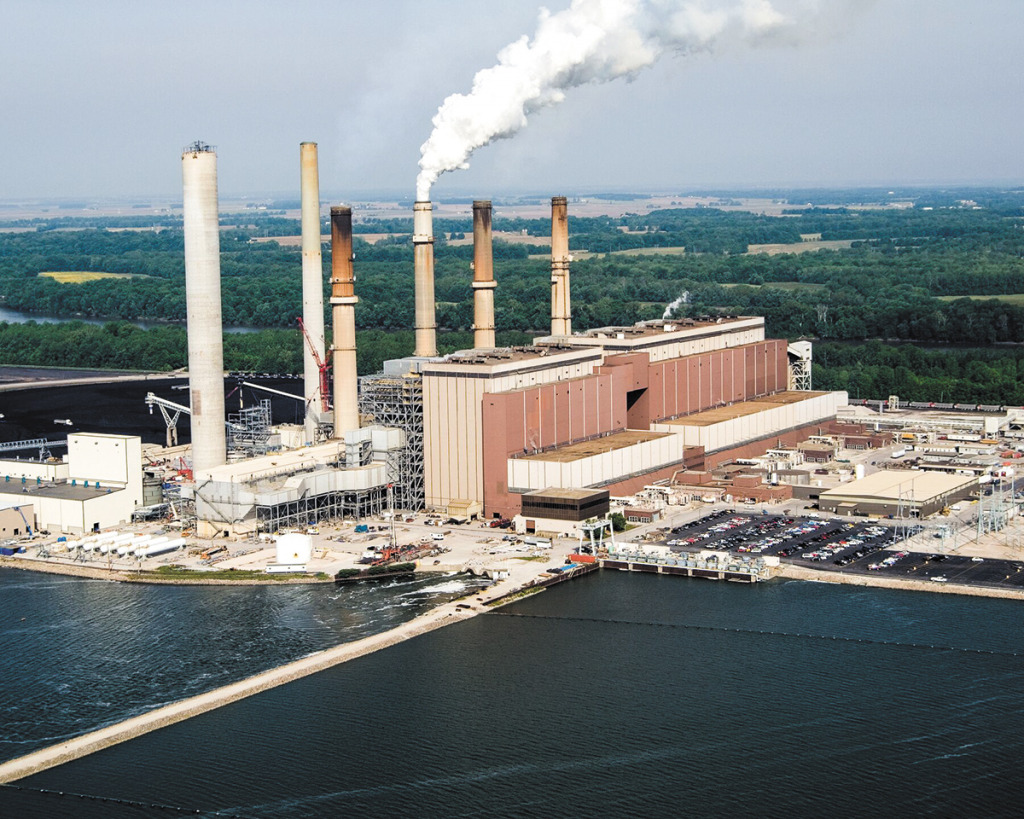Subscriber Benefit
As a subscriber you can listen to articles at work, in the car, or while you work out. Subscribe NowIndiana needs serious surge wattage for its future economy.
Surge wattage is the additional power required to start an electric motor. Similarly, Indiana’s economic engine will make unprecedented demands for energy in the coming years.
That massive challenge was the overriding theme of the inaugural IBJ Media Future of Energy Summit held Thursday in downtown Indianapolis. Hot topics included the staggering power demands of data centers, continued reliance on coal and natural gas, and the potential assistance of nuclear power, though years away.
One panelist compared coming increases to energy demands to a hockey stick—straight for a long time with a dramatic upward bend.
“By 2040, our load will be increased by 60 percent,” said Todd Hillman, senior vice president and chief customer officer for Carmel-based Independent System Operator (MISO), an electric grid operator across 15 states and the Canadian province of Manitoba.
The leaders also discussed the debate over whether large data centers built by tech giants including Microsoft, Google and Amazon Web Services are more of an economic gain or power drain.
Steve Baker, president of Indiana Michigan Power, put into perspective the massive energy demands of modern data centers. Three large centers and one smaller customer will represent 4.5 gigawatts (1 gigawatt is a billion watts) of new load—i.e., something that consumes power—served by 2030.
“To put that into perspective, our peak load at Indiana Michigan Power Co., our 600,000 customers … that’s 4 gigawatts. So, we’ll more than double that,” Baker said.
In 2019, lawmakers passed tax incentives to lure data centers to Indiana. In a settlement last month hailed by ratepayer advocates, three large incoming data centers agreed to each provide $500,000 a year for five years to the Indiana Community Action Association to support low-income customers.
House Speaker Todd Huston, R-Fishers, touted the data centers as economic development boons for the state, creating economic ecosystems in the high-tech and AI space.
“They’re going to be built somewhere. They should be built here,” Huston said. On the need for more energy, he added: “I don’t care if it’s coal, natural gas, wind, solar. I don’t care if it’s mice running on treadmills in some warehouse. I flat out don’t care.”
Indiana already relies on outside energy to meet its needs. In 2022, 13% of Indiana’s electricity was from other states, according to the U.S. Energy Information Administration.
Several panelists said the state would need to rely on traditional energy sources like coal and natural gas in the near term.
“Gas, at least in the near term, is going to be very important. It’s something that we have focused on a lot,” said Stan Pinegar, president of Duke Energy’s Indiana operations. “At Duke Indiana we have coal units that are nearly 60 years old that we need to address just for age reasons. The easiest way we have found to add to our system is to take advantage of where we have major transmission facilities already in place.”
The panelists saw long-term growth potential for new energy sources, particularly nuclear, in the coming years while continuing to invest in renewable energy sources like solar.
Brandi Davis-Handy, president of AES Indiana, said she considers her large corporate customers but also “a young adult who just graduated from college and is getting their first apartment, and so we have to think about reliability, affordability, and that’s important, too.”
Please enable JavaScript to view this content.


What evidence do we have that data centers create economic activity, and/or the creation of high tech companies with lots of high paying jobs?
If ever you’ve wondered how Indiana managed to go bankrupt building canals, just re-read Todd Huston’s comments…
the consequences of building these centers, which are of questionable long-term economic value, are not his concern. It’s just important we have them in Indiana. Because they’re cool and cutting edge and new and bright and shiny…
Maybe we should build these new centers near the old canals, and set up waterwheels to power them…
That was exactly my thought after reading Todd Huston’s quote. Good grief. He should have just said he “flat out doesn’t care about the environment”.
Building pointless highways is another way in which Indiana’s current leadership acts like the leadership that bankrupted the State with canals in the 1800s.
The merits of data centers deserve to be debated, but I’m very much on board with Indiana pursuing small modular reactors. We can and should be at the forefront of that technology.
Indiana should place a 10-year moratorium on all data centers projects. This is absurd to even still be debating how to power a zero-job gigawatt plant.